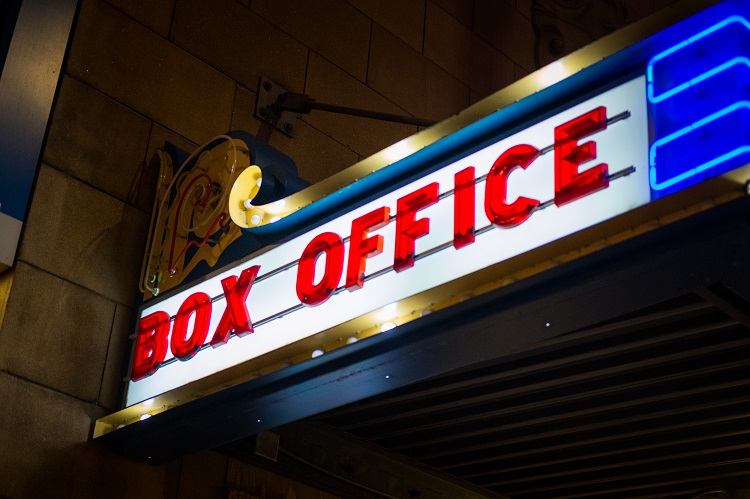Adam McKay’s “The Big Short” achieves a surprising feat—making an economics film funny. And by funny, I mean hilarious. Nevertheless, it minimizes the true story of the 2007-2008 financial crisis by boiling everything down to corporate greed, and calling for more government regulation of the financial system. In reality, that very regulation helped spur the historic disaster.
“The Big Short” centers on a rag-tag group of corporate futures traders—that’s legal speak for investors who gamble on future events—who bet against the house, i.e. the entire housing market. Michael Burry (Christian Bale) runs the numbers, and finds that the housing market is really a house of cards. He puts his money where his mouth is, and uses his investors’ money to bet that the market will crash—which it famously does.
A Bag of Bad Loans
The fundamental problem lay in sub-prime housing loans. People often go into debt to buy a house—but the banks started issuing mortgages to people who clearly could not afford the houses. These loans were referred to as “sub-prime,” since the bank had to overlook the likelihood that the owner would never pay back the money. At the height of the crisis, banks started offering “NINJA” loans, to people with “No Income, No Job, or Assets.”
Despite clear evidence of these bad loans, however, credit agencies bundled them up into CDOs, or Collateralized Debt Obligations, and gave them high ratings. Burry saw that it was only a matter of time before the debtors defaulted en masse, leading the banks to foreclose on houses and investors to start demanding their money back. Then the banks would collapse, ushering in the crisis.
In the end, the agencies could hide it no longer, the market crashed, and the government bailed out the banks. Or so the story goes.
At the end of the film, a narrator laments that the corporate greed which caused the crisis ran unchecked, and that the government did not crack down on banks and credit agencies. Alas, this could not be further from the truth.
Government Was Involved from the Beginning
Contrary to the film’s sad lament, it was not just corporate greed that caused the financial crisis. A set of regulations going back to the 1920s incentivized banks to give loans to larger and larger segments of the population, regardless of their ability to pay the money back.
These regulations were often presented as anti-discrimination measures—since higher loan standards disqualified more blacks than whites in one historic study, the standards must be lowered to promote equality. Despite these good intentions, these programs incentivized bad banking.
Jay Richards, assistant research professor at the Catholic University of America and author of “Infiltrated: How to Stop the Insiders and Activists who are Exploiting the Financial Crisis to Control Our Lives and Our Fortunes,” explains how the book on which the movie was based went wrong.
Michael Lewis, author of “The Big Short: Inside the Doomsday Machine,” “entirely misses the point that government policy—especially the affordable housing policies that destroyed the underlying underwriting standards on mortgages—were the sine qua non of the financial crisis, along with an implicit too big to fail mentality and Fed policy.” In other words, it’s the government, stupid.
Without government regulations incentivizing banks to offer sub-prime loans, these loans would not have been a worthwhile investment. Bankers would not have created the financial crisis, no matter how much corporate greed drove them. That does not excuse whatever greed was involved, but it does spread the guilt around.
It Just Doesn’t Make Sense
But “The Big Short” runs into another mix-up—it portrays the financial titans of the housing market as all-powerful, greedy Grinches trying to profit from preying on the weak with risky loans. As Forbes’ John Tamny explains, this makes no sense.
First off, if “the dark forces on Wall Street all along knew how bad” the loans were, they wouldn’t have invested in those securities themselves. Instead, “they were playing with their own money,” and they ended up in trouble “because they believed the mortgage market was in good shape.” The supposed Grinches were themselves the unsuspecting Whos down in Whoville.
Secondly, “the movie gave the impression of an all-powerful financial sector that had rigged the market in ways that delayed the eventual profits earned by Burry et al.” If the big banks were that powerful, however, then the housing market would not have collapsed, and the financial institutions would not have needed to be bailed out in 2008.
[pq]Big government encouraged the bad practices behind the financial crisis.[/pq]
While the film portrays corporate bankers as greedy and manipulative, risking other people’s money with bad housing loans, Tamny explains that the bankers were actually not being risky enough. He points to Hollywood as an example of truly risky finance—many films lose money, so every investment is a risk, but the risk is worthwhile since successful films come with a big pay-day.
The housing market, however, is inherently risk-averse. When you buy a house, you buy solid assets—so real, it’s called “real estate.” While houses do gain and lose value, they will never drop to zero, the way companies do when they go out of business. As Tamny noted, “housing is not investment.”
The real risk—and the real reward—is in stocks, during a growing economy. More small businesses fail than succeed, but when they win, they can win big. Investors can buy a small amount of stock and reap huge rewards if they choose a company that becomes successful. The real pay-off, Tamny explains, is when companies merge or go public.
In Tamny’s view, the housing boom signaled a weak economy, not a strong one. If the economy was strong, investors would favor stocks—but they kept rushing to housing instead. When the market shifted, and housing values dropped, this was actually a positive return to normalcy. In what is called a “market correction,” real estate values would decrease as investors were drawn to more lucrative stocks. Alas, it was not to be.
“Fixing” the Crisis
The government did not allow the market to adjust. As Tamny explains, “The housing correction didn’t crash the economy as the film errantly suggested, but the federal government’s efforts to neuter the correction did.”
When the government bailed out the big banks, it did not make the economy more stable. In fact, this action threw markets into a tailspin. “The ‘crisis’ was in truth the bailouts that indicated a government blocking an economy’s cleanse of faulty housing consumption, a perpetuation of the banking practices that led to the bailouts in the first place, plus those same bailouts indicated much more muscular involvement in the economy going forward.”
Free markets work best when unencumbered by government favoritism. When a company goes out of business, people lose their jobs, but the market as a whole benefits. Newer or more effective companies—which serve their customers better—tend to take the failed firm’s place. Old employees find work elsewhere, or even create their own businesses. This jolt is painful, but it ends up serving customers better and making almost everyone better off.
As Tamny notes, “Failure is a source of positive evolution for all business sectors—Silicon Valley is the richest region in the world precisely because most of its start-ups fail.”
When the government props up a failed business, however, it perpetuates the practices that led that business to fail. Worse, it creates a fear among successful businesses that did not receive this government benefit. Perversely, companies that were better serving their customers are suddenly incentivized to act like companies that failed, because the failures were singled out for special treatment. This throws businesses—and investors—into deep confusion.
“To put it plainly, the crisis was man-made in Washington, D.C.,” Tamny declares.
But the government wasn’t done yet. It wasn’t enough for Washington to support bad loans, or for the federal government to bail out the failing banks—it needed to pass more regulations, too.
As Jay Richards explained, “Dodd-Frank has made the problem worse.” The legislation, which aimed to end the problem of banks so large they were considered “Too Big to Fail,” ended up designating institutions as “systematically important financial institutions (SIFIs).”
“That’s essentially making ‘too big to fail’ official government policy,” Richards concluded. Before Dodd-Frank was passed in 2010, the Federal Deposit Insurance Corporation (FDIC) approved an average of 170 new banks a year—since then, it has approved only one. Meanwhile, government figures indicate the country is losing one community bank or credit union a day.
Big government encouraged the bad practices behind the crisis, it turned the crisis into a long-term economic disaster, and it etched the same bad policies in the stone of regulation. While “The Big Short” is a fun movie, its minimizing of government’s role in the financial crisis isn’t just laughable—it’s egregious.


